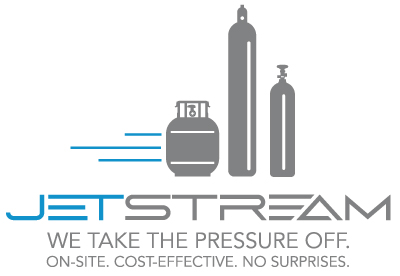Compressed gases can be dangerous to work with if they are not handled properly. Even when you store these delicate containers you have to be careful about how you do it to keep everyone in your business safe. The only way to maintain compressed gas cylinder safety is to follow the storage guidelines created and enforced by OSHA. Here is a general overview of those guidelines and how to put them to good use.
 Storing the Cylinders in the Right Conditions
Storing the Cylinders in the Right Conditions
Compressed gas cylinders can only be stored properly if your storage location has all of the right conditions. The location must be dry and cool and free from direct sunlight for the tanks to remain in good shape. If the room is too damp the tanks can corrode and wear out quickly. If the room gets above 120 degrees Fahrenheit, or the tanks are exposed to direct sunlight there is a chance that the gas will leak out of the tanks.
The room also has to be well-ventilated or it makes it into a health hazard. Even if you follow all of the location guidelines for your storage rooms there is still a chance that gas will leak out of the tanks. If the gas does leak you don’t want it to collect in the storage room, or it can be dangerous.
Preparing the Cylinder for Storage
When you are ready to place a tank in storage you need to make sure it is labeled with the gas that is inside. The regulator must be detached from the tank and the valve cap should be firmly in place. If a regulator is left in place and it fails during storage the entire contents of the tank is going to leak out into the storage environment. The valve is the weak point of any compressed gas tank, and it needs to be protected.
Keep Different Hazard Types from Mixing
Compressed gases are separated into different hazard types and you should know them all. Here are the most common hazard types.
- Corrosive
- Toxic
- Flammable
- Cryogenic
- Inert
- Oxidizer
When you store your gases it’s important to separate each of the different hazard types from one another for complete compressed gas cylinder safety. Always make sure that any of the oxidizer gases are kept at least 20 feet away from the flammable gases because they can make a fire much more severe. If there is not enough space to separate your cylinders based on hazard types by at least 20 feet, a five foot fire-proof wall can be used as the separator as well while still maintaining your compressed gas cylinder safety.
 Securing the Cylinders
Securing the Cylinders
Any cylinders over 18 inches tall need to be secured with a chain. The chain should be up above the mid-point of the cylinder and below the shoulder in order to hold it securely. When a cylinder is less than 18 inches tall it can be held in place by an approved wall bracket or stand.
Don’t Hold On to Cylinders for Too Long
Never keep cylinders at your facility that are not being used for more than a year. If you have cylinders that are sitting around and not being used, they should either be sent to a different location where they will be used, or sent back to the supplier. A good way to prevent tanks from sitting too long is to store them so that the first tanks in are the first tanks out as well.
Anytime that you are storing compressed gas cylinders at your facility it’s important to follow these guidelines carefully. Stick with the safe-storage guidelines and you can minimize the risk you take and maintain compressed gas cylinder safety throughout your workplace.
Contact us for a FREE consultation and estimate on compressed gas cylinder cleanup and disposal that will reduce your risk and improve your bottom line.

